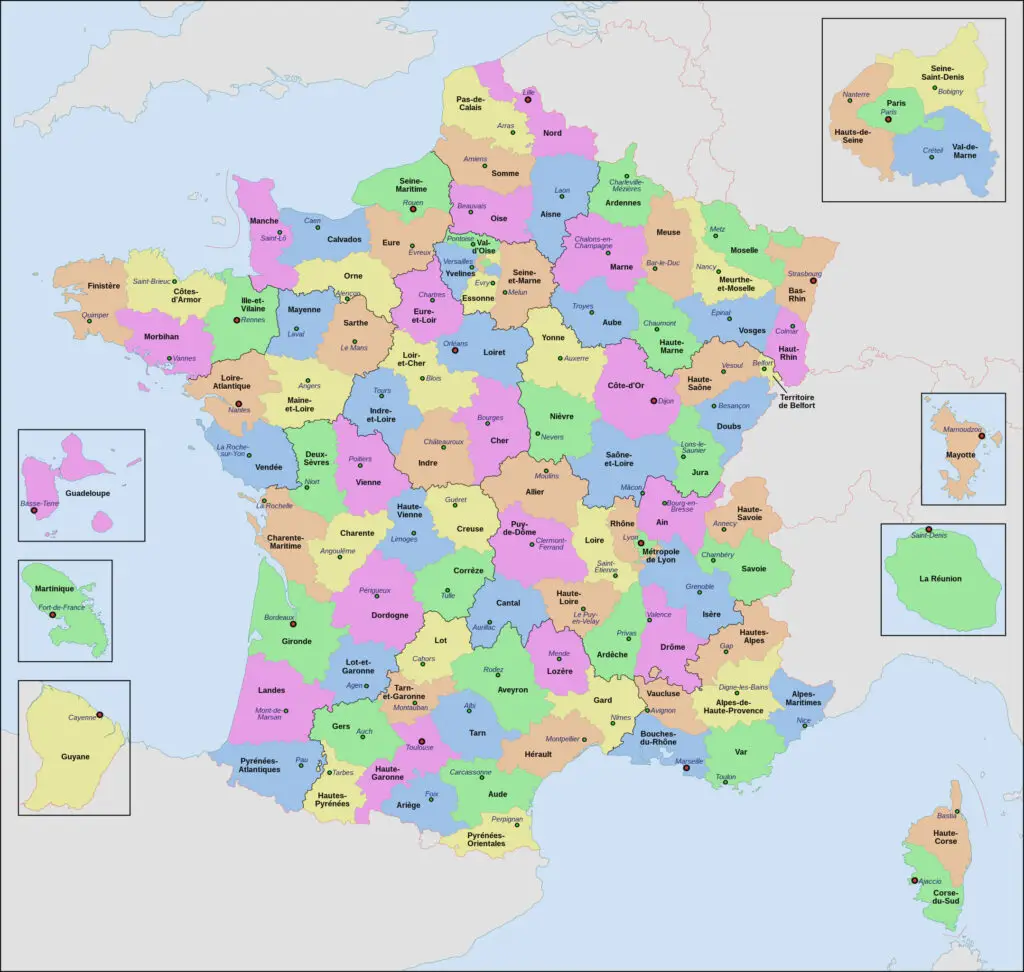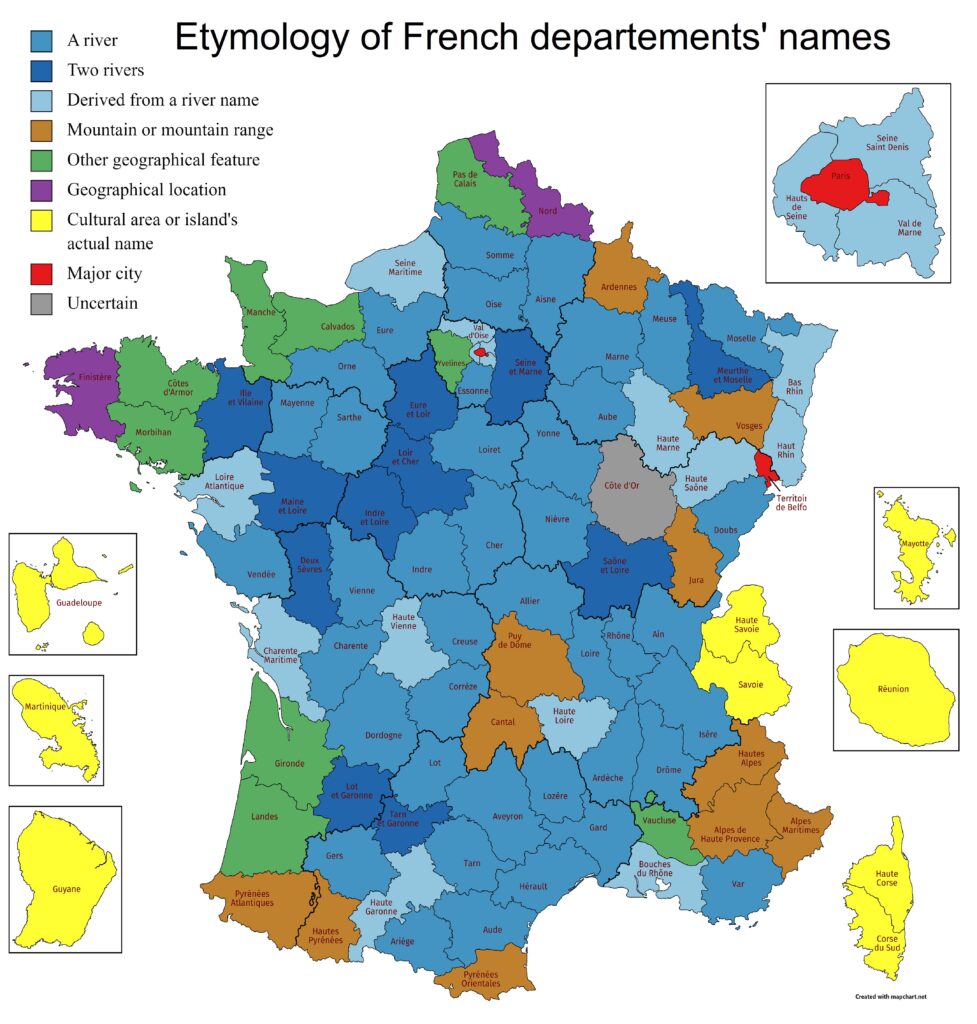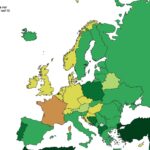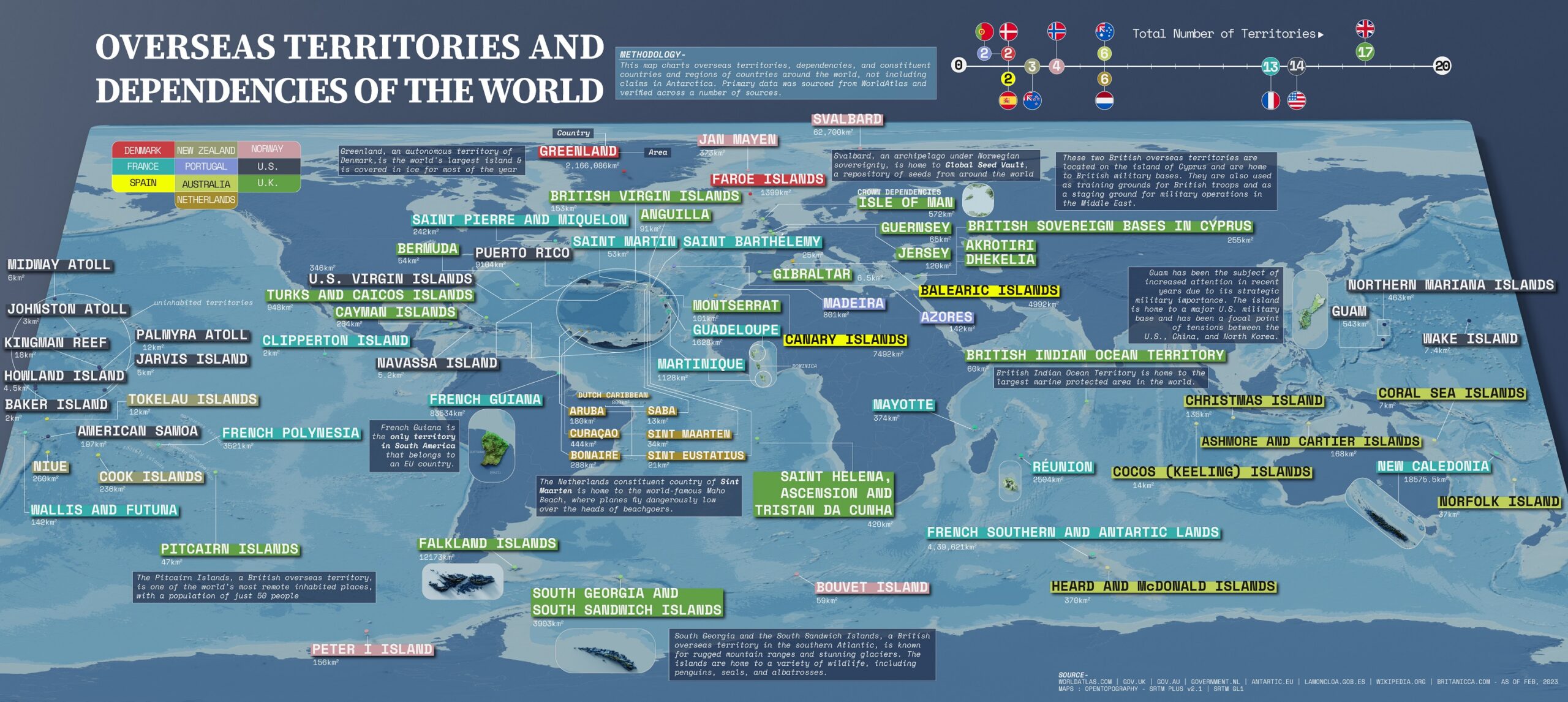Departments of France Mapped
There are 101 departments in mainland France. These departments are administrative divisions that serve as the primary subdivisions of the country. Each department is assigned a number and a name. Additionally, there are five overseas departments (French Guiana, Guadeloupe, Martinique, Mayotte, and Réunion) and one overseas collectivity (French Polynesia), making a total of 107 departments and collectivities in France.

The map below shows all overseas territories of France.

The history of the formation of provinces in France dates back to the medieval period and has evolved over time.
During the early medieval period, France was fragmented into numerous smaller territories, each with its own ruler and administrative organization. These territories were often governed by feudal lords and were known as counties, duchies, or other regional designations. Some of the notable early provinces included Normandy, Brittany, Aquitaine, Burgundy, and Provence.
The consolidation of the French monarchy under the Capetian dynasty, starting in the 10th century, led to the centralization of power. As the royal domain expanded, the Capetian kings sought to exert more control over the territories by appointing royal officials known as “baillis” or “sénéchaux” to administer justice and collect taxes. These officials were often responsible for specific territories that later became known as provinces.
Over time, larger provinces emerged through various means, including conquest, inheritance, and marriage alliances. For example, the territories of Anjou, Touraine, and Maine were gradually united under the control of the House of Anjou. Similarly, the regions of Champagne, Brie, and Bassigny were united to form the province of Champagne.
The provinces gained greater administrative importance during the reign of Louis XI (1461-1483) and his successors. The monarchs established the “parlements,” which were regional courts of law and justice. The parlements had jurisdiction over their respective provinces and played a crucial role in the administration of justice.
The French Revolution in the late 18th century brought significant changes to the administrative structure of France. In 1790, the revolutionary government abolished the traditional provinces and replaced them with a system of departments. The new departments were based on geographical considerations and aimed at creating more standardized administrative divisions.
Although the provinces were formally abolished, some of their names and regional identities still persist in modern France. Many regions continue to be associated with their historical provinces, and local cultural and linguistic variations can still be observed. In recent years, France has undergone administrative reforms, leading to the creation of larger regions known as “régions” that encompass multiple departments.
The etymology of French departments’ names
The names of French departments often have interesting etymologies that reflect their historical, geographical, or cultural significance. Here are a few examples:
- The department of Seine derives its name from the Seine River, which flows through Paris. The word “Seine” comes from the Latin word “Sequana,” which was the name of the goddess of the Seine River during the Roman era.
- The department of Rhône is named after the Rhône River, which runs through it. The name “Rhône” is believed to have Celtic origins, possibly derived from the word “Rodanus,” meaning “river.”
- The department of Loire is named after the Loire River, the longest river in France. The name “Loire” is thought to have Gaulish origins, possibly derived from the Celtic word “Ligera,” which means “wild” or “impetuous.”
- The department of Var is named after the Var River, which runs through it. The origin of the name “Var” is uncertain, but it is believed to have Celtic roots and might mean “water” or “river” in the Celtic language.
- The department of Alpes-Maritimes is located in the southeastern part of France, encompassing the French Riviera. Its name combines two elements: “Alpes” refers to the nearby Alpine mountain range, while “Maritimes” relates to its location along the Mediterranean coast.
- The department of Haute-Garonne is situated in the southwest of France. The name “Haute-Garonne” translates to “Upper Garonne” in English, indicating its location along the upper part of the Garonne River.
- The department of Bouches-du-Rhône is located in the Provence-Alpes-Côte d’Azur region. Its name means “Mouths of the Rhône” in English, referring to the area where the Rhône River splits into several branches before flowing into the Mediterranean Sea.
The map below shows the etymology of French departments’ names created by Reddit user vanlich.

You can learn more about France from the following books and maps:









Your map says the etymology of the Cote d’Or is uncertain. Perhaps it comes from the ridge of vineyards south of Dijon named the Cote d’Or?